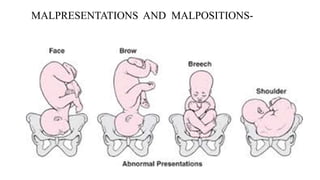Definition of Placenta Previa
This is a condition in which the placenta of the growing baby implants in such a way as to cover the cervix (entrance of the womb). This abnormal location of the placenta could lead to bleeding during pregnancy or delivery as the ideal location where it should implant is the upper part of the womb’s inner lining or at the side.

Types Of Placenta Previa
Complete: The placenta fully overs the cervix and this type hardly resolve on its own.
Partial: Here, the placenta partially covers the cervix.
Marginal: In this type, just the edge of the placenta gets to the cervix. This type commonly resolves as the pregnancy advances.
Low-lying: is the location of the placenta at the lower aspect of the placenta, close to the cervix.

Causes Of Placenta Previa
The cause of placenta previa is unknown but there are risk factors.
Risk-Factors For Placenta Previa
- Below are a few conditions that can pre-dispose a woman to placenta previa
- Advanced maternal age(older than 35years)
- Previous Pregnancy
- Multiple gestations
- Short intervals between pregnancies
- Black ethnicity.
- Previous placenta previa
- Previous scarring from surgeries eg caesarean section, uterine fibroid surgery.
- Abnormalities of the inner uterine lining.
Symptoms of Placenta
- Painless vaginal bleeding
- Bright-red vaginal bleeding
- Spotting may occur just before the incidence
What Causes The Bleeding?
The first trimester of pregnancy also has its bleeding conditions but during the second and third trimesters, bleeding is usually due to abnormal placental implantation or attachment.
Heavy bleeding or haemorrhaging, if occurring with labour, would most like be caused by dilatation of the cervix. It can also be caused by disruption of the placental implantation from the cervix and the lower aspect of the uterus. The lower uterine segment does not effectively contract to constrict blood vessels as in the uterine aspect thereby resulting in continued bleeding from the vagina.
Diagnosis
The diagnosis of placenta previa is made during an ultrasound examination of a pregnant woman.
The diagnosis is also made when a pregnant woman experiences vaginal bleeding peculiar to placenta previa.
Complications Of Placenta Previa:
1. Maternal Complications
Complications of placenta previa to the woman or mother are as follows:
- Increased rates of blood transfusion
- Placental abruption
- Preterm delivery
- Increased incidence of postpartum endometritis
- Mortality rate (2-3%)
- Heavy bleeding or haemorrhage. It is very important to plan delivery and control of haemorrhage in cases of placenta previa as well as placenta accrete, increta, and percreta.)
2. Neonatal Complications
Here are some complications of placenta previa in the neonate/infant as follows:
- Low birth weight (less than 2500g)
- Neonatal respiratory distress syndrome
- Higher incidence of Jaundice
- Admission to the neonatal intensive care unit (NICU) or special care baby unit
- Longer stay in the hospital
- Increased risk for infant neurodevelopmental delay and sudden infant death syndrome (SIDS)
- The increased neonatal mortality rate
- Congenital malformations
- Fetal intrauterine growth retardation (IUGR)
- Fetal anaemia and Rh isoimmunization
- Abnormal fetal presentation
Management Of Placenta Previa
If a woman experiences the above symptoms in pregnancy she should present immediately at the hospital. This condition is treated as a medical emergency and she is immediately admitted into the labour ward.
Close monitoring is carried out and this includes maternal vital signs, foetal heart rate monitoring and blood transfusion to replace blood loss.
Treatment Of Placenta Previa
In some cases, this condition resolves on its own as the position of the placenta could move upwards and away from the cervix with the advancement of the pregnancy.
If it does not resolve on its own, surgical intervention is carried out which is a caesarean section. This is done to save the life of the mother and baby.
After delivery, the baby is managed at the special care baby unit as the baby in question is usually preterm.
Patient Education on Placenta Previa
Mothers who are diagnosed with placenta previa are advised to:
- Decrease activity to avoid bleeding again
- Avoid sexual intercourse.
- Avoid pelvic examination
- Remember that there can be a recurrence and therefore take heed to notify their obstetrician when they get pregnant again. They should also reveal their history of placenta previa to any new obstetrical caregiver.
- Maintain the intake of iron and folate as a safety margin in the event of bleeding.
How Can Placenta Previa be Prevented?
Usually, this condition cannot be prevented.
In some cases, risk factors can be eliminated (such as stopping the habit of smoking).
Bleeding from placenta previa can be reduced in many cases by bed rest, limitation of activity, and/or avoiding sexual intercourse.








